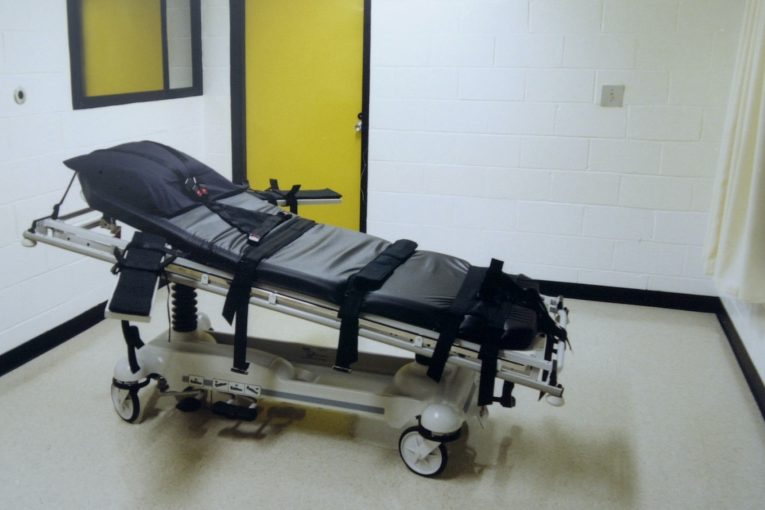

By Jaden Jarmel-Schneider
WASHINGTON DC – The Supreme Court rejected a petition contesting the recently enacted federal execution protocol, effectively ending a 17-year hiatus of federal executions in America. Four inmates whose executions were put on hold by circuit and district court litigation regarding their legality will now be among the first American victims of the death penalty in the 21st century.
The petition for a writ of certiorari that the court considered was filed in response to a contentious April decision in the U.S. Court of Appeals for the District of Columbia Circuit Court which vacated the existing injunction on federal executions.
The decision came in the wake of Attorney General William Barr’s Department of Justice announcing a new execution protocol in July of 2019. With this announcement came the execution dates for Daniel Lee, Wesley Purkey, Dustin Honken, and Keith Nelson.
The petition, filed by Lee, Purkey, and Honken, asked the Supreme Court to reconsider the Court of Appeals ruling, reasserting that the injunction ought to stay in place because the Department of Justice didn’t abide by the Federal Death Penalty Act (FDPA) in enforcing its new execution protocol.
The FDPA, enacted in 1994, requires federal executions to comply with the protocols of the state in which the prisoner was tried. By deciding not to hear the case, the Supreme Court rejected the possibility of revisiting the April decision, greenlighting the four executions.
A challenge to the protocol was first introduced following Barr’s announcement of a uniform one-drug lethal-injection execution process as a part of the new execution protocol, according to the Death Penalty Information Center (DPIC).
Attorneys for the four prisoners argued that enforcing a single federal execution protocol violated the inherently variable nature of the FDPA, which requires the court to consider federal protocol on a state-by-state basis.
Unpersuaded, the D.C. Appeals Court ruled against the petition in a 2-1 decision whose lack of consensus left much ambiguity in the precedent books. It was this decision, which the prisoners wrote “raises more questions than it resolves about how to conduct federal executions,” that led to a petition for a writ of certiorari.
So contentious was the ruling that after the Supreme Court cut the petition from their docket this week, both Justice Ginsburg and Justice Sotomayor publicly noted that they would have granted the writ. 
The April decision in the Appeals Court centered around the exact criteria required by the FDPA. Although each of the three judges on the panel took a different stance, two decided that the lower courts had mischaracterized the requirements, creating a technical majority that rejected the challenge.
The injunction, put into place after the Department of Justice tried to schedule the executions in late 2019, paused federal executions until litigation around possible FDPA violations was resolved.
Judge Gregory Katsas and Judge Neomi Rao, both Trump appointees, voted to vacate. Judge David Tatel, appointed by Bill Clinton, voted against, arguing in his dissenting opinion that “had Congress intended to authorize the Attorney General to adopt a uniform execution protocol, it knew exactly how to do so.”
While this was enough to send the case back to the district courts for litigation and lift the injunction for the time being, it was not enough to set a clear standard, according to the DPIC. Each of the three judges wrote their own opinion, each of which differed in its interpretation of the FDPA.
Judge Katsas made a distinction between acceptable and unacceptable deviations from state protocol in federal executions: “the FDPA regulates only the top-line choice among execution methods, such as the choice to use lethal injection instead of hanging or electrocution,” as described in the per curium decision.
Judge Roa, who also concluded that the new protocol didn’t violate the FDPA, argued that there is a spectrum of state protocols—from formal to informal—to which federal protocol must conform to varying degrees. In this case, she wrote, the FDPA was not violated by a uniform injection protocol.
Judge Tatel, the only judge to dissent, rejected Judge Roa’s reading of the FDPA, writing that the FDPA “requires federal executions to be carried out using the same procedures that states use to execute their own prisoners—procedures set forth not just in statutes and regulations, but also in protocols issued by state prison officials pursuant to state law.”
As evidenced in the judges’ written opinions, the ambiguity important for precedent centered around the question of how much federal executions must adhere to state protocol, an ambiguity that Judge Tatel argued works against Congress’s intention in passing FDPA: “to make federal executions more humane by ensuring that federal prisoners are executed in the same manner as states execute their own.”
The dangers of this ambiguity were also noted by Cate Stetson, who represented the prisoners in court.
“Without action by the full court, the panel’s splintered decision will allow the government to execute prisoners even while serious questions remain unanswered about the legality of the government’s execution procedures under federal law.”
When the Supreme Court announced Monday morning that they would not hear the case against the new federal execution protocol, they rubber-stamped four of the first seven executions since the federal death penalty was reinstated in 1988.
With the injunction vacated by the 2-1 April decision in the D.C. Appeals Court and the Supreme Court refusing to reconsider the decision, Daniel Lee, Wesley Purkey, Dustin Honken, and Keith Nelson will be the first Americans to be executed on federal death row since 2003.
To sign up for our new newsletter – Everyday Injustice – https://tinyurl.com/yyultcf9
